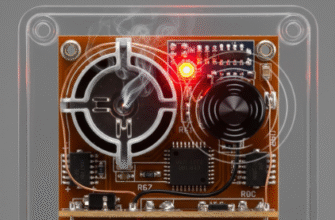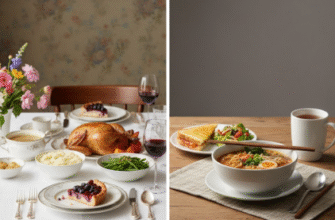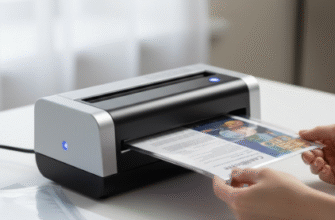The simple act of transforming flour, water, and heat into bread, cakes, or pastries is almost primal. Yet, the journey of the technology enabling this transformation is a fascinating story of human innovation, stretching back thousands of years. What began with rudimentary pits and hot stones has evolved into sophisticated appliances offering precise control over the baking environment. This evolution didn’t just change how we bake; it reshaped kitchens, diets, and even societal structures.
From Embers to Enclosures: The Dawn of Baking
The earliest baking likely involved slapping dough onto hot rocks near a fire or burying it in embers. Simple, effective, but hardly refined. The first significant leap came with the development of early ovens. These weren’t appliances in the modern sense but rather dedicated structures. Think of the ancient Egyptians, who utilized conical clay ovens. Dough was often slapped onto the hot interior or exterior walls. Similar designs, like the tandoor in South Asia or the tabun in the Middle East, emerged across different cultures. These ovens shared common traits: they were typically made of clay or brick, heated by burning wood or dung directly inside, and then the embers were managed or removed before baking commenced.
Heating was intense and primarily radiant. Controlling the temperature was an art form, relying entirely on the baker’s experience judging the fuel load, the burn time, and the feel of the heat. There was no thermostat, no even heat circulation. Baking was often a communal activity, centered around these shared ovens. The results could be wonderful – think of the unique char and flavor imparted by a tandoor – but consistency was a challenge, and the process was laborious, demanding constant attention to the fire.
Roman Refinements and Medieval Methods
The Romans, renowned engineers, scaled up baking operations. They constructed larger, more permanent brick and stone ovens, often with separate fireboxes, allowing for more continuous baking without constantly clearing embers. This supported their large population centers and military needs. The profession of the baker became more established. These large ovens, often publicly or commercially operated, signify a step towards specialized food production.
Following the decline of the Roman Empire, much of Europe saw a return to simpler methods during the early Middle Ages. While large households or manors might possess dedicated bakehouses with substantial ovens similar to Roman designs, communal village ovens remained common. Baking technology saw relatively little advancement during this period. The core principle remained radiant heat from a wood-fired masonry chamber. The focus was less on innovation and more on maintaining the existing, essential practice of bread making.
The Iron Age in the Kitchen
A significant shift began much later, around the 18th century, with the increasing availability and affordability of cast iron. The invention of the cast iron stove, or kitchen range, was revolutionary. Initially wood-fired, and later adapted for coal, these enclosed metal boxes offered several advantages over open hearths or masonry ovens. They contained the heat far better, making kitchens warmer but also directing more energy towards cooking and baking. They often incorporated a dedicated oven box alongside the stovetop burners.
This marked a major move towards bringing sophisticated baking capabilities into the individual home, rather than relying solely on communal ovens or bakeries. Temperature control was still rudimentary, often managed by dampers controlling airflow to the firebox, but it was a step up from managing an open fire within a brick chamber. These ranges became centerpieces of the Victorian kitchen, symbols of modernity and domestic self-sufficiency. Baking became more accessible, though still requiring considerable skill to manage the fire and understand the stove’s quirks.
Verified Fact: The development of enclosed cast iron cooking ranges in the 18th and 19th centuries dramatically improved thermal efficiency compared to open hearth cooking. This allowed for more controlled baking environments within homes. These early ranges gradually incorporated features like built-in water boilers and dedicated oven compartments, paving the way for modern kitchen layouts.
Gas and Electricity: Precision Arrives
The late 19th and early 20th centuries ushered in the era of utility power, fundamentally changing the kitchen once again. Gas ovens offered a cleaner fuel source than wood or coal and, crucially, allowed for much finer temperature regulation. The invention and implementation of the thermostat, initially mechanical and later more refined, was a game-changer. Bakers could now set a desired temperature, and the oven would attempt to maintain it by controlling the gas flow.
Electric ovens followed, offering potentially even more consistent heat, distributed through heating elements typically located at the top and bottom of the oven cavity. Early electric models could be slow to heat up and sometimes struggled with unevenness, but they eliminated the combustion byproducts of gas and offered simple operation. The competition between gas and electric spurred innovation in both camps, leading to better insulation, improved thermostats, timers, and interior lights.
This period democratized baking. Reliable temperature control meant recipes could be followed with greater accuracy, yielding more predictable results. Homemakers could tackle more ambitious baking projects with confidence. The focus shifted from wrestling with the heat source to mastering the chemistry and technique of baking itself.
The Fan Revolution: Convection Cooking
While traditional ovens relied on radiant heat (from hot surfaces) and natural convection (hot air rising), the introduction of convection ovens in the latter half of the 20th century added a crucial element: forced convection. By incorporating a fan, usually at the back of the oven cavity, these appliances actively circulate the hot air.
Why was this significant?
- Evenness: Circulating air helps eliminate hot and cold spots common in conventional ovens, leading to more evenly baked and browned foods. No more rotating pans halfway through baking quite so religiously.
- Speed: The moving hot air transfers heat more efficiently to the food, often reducing cooking times by up to 25% compared to conventional baking.
- Efficiency: More even heat distribution allows for effective multi-rack baking. You can bake multiple trays of cookies simultaneously with consistent results on each level.
- Crisping: The constant air movement helps to wick away moisture from the surface of foods, promoting better browning and crisping – ideal for roasted items or pastry crusts.
Initially found primarily in commercial kitchens, convection technology gradually made its way into domestic ovens. Today, it’s a common feature, often offered as an alternative setting alongside traditional bake modes. It represented another leap in giving the baker greater control and achieving better, faster results.
Smart Ovens and Future Directions
The evolution hasn’t stopped. We now see combination steam-convection ovens, which inject moisture into the baking process – fantastic for artisanal breads and delicate custards. Digital controls offer unparalleled precision, pre-programmed settings for specific foods, and delayed start timers. Smart ovens connect to home networks, allowing remote monitoring and control via smartphone apps, downloading recipes, and even integrating with voice assistants.
Technologies like air frying, essentially compact, high-intensity convection ovens, have also carved out a niche, demonstrating the continued refinement of using forced hot air for cooking. Future developments might include even smarter sensors capable of detecting food doneness, more energy-efficient heating methods, and greater integration with automated cooking systems.
From the smoky uncertainty of a clay pit oven to the app-controlled precision of a modern smart appliance, the technology of baking has undergone a remarkable transformation. Each step – enclosing the fire, harnessing gas and electricity, adding thermostats, and introducing forced air circulation – has aimed at providing more control, greater consistency, improved efficiency, and ultimately, better results. It’s a journey that reflects our enduring desire to master heat and harness it for one of humanity’s oldest culinary arts.
Important Note: While modern ovens offer incredible precision, understanding basic principles remains key. Factors like oven calibration (actual vs. set temperature), proper preheating, and pan type/color still significantly impact baking outcomes. Relying solely on technology without foundational knowledge can sometimes lead to unexpected results.







